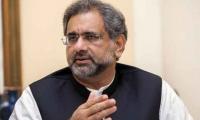ISLAMABAD: Despite having gross financing needs of Rs25.2 trillion, including a projected federal fiscal deficit of Rs8.5 trillion and debt maturities of Rs16.64 trillion, the Ministry of Finance claimed that the borrowing under the caretaker government’s tenure remained lower compared to the comparable period of the last government.
The Ministry of Finance stated that the caretaker government period from August 17, 2023 to January 31, 2024, when compared to the preceding period from February 1, 2023 to August 16, 2023, showed the borrowings in the caretaker government’s term have been lower as compared to the preceding period.
The bulk of the borrowings raised in the last few months was to meet debt repayment obligations including principal and interest expense liabilities as caretaker government focused primarily on fiscal consolidation measures, including revenue mobilisation and expenditure rationalisation.
The caretaker government inherited a policy rate of 22 percent, which is highest ever since 1972. The average policy rate during preceding period was almost 19.5 percent.
Over a short stint, with careful debt management operations, caretaker government has managed to improve domestic debt profile by: (i) extending maturity of government securities; (ii) raising debt on margin below the policy rate; and (iii) tapping non-bank and retail investors through capital market. Focus was on reducing borrowings from government securities through the banking sector. The borrowing through government securities fell by 67 percent in the caretaker government’s term as compared to the preceding period.
The caretaker government successfully retired short-term Treasury Bills amounting to Rs1.6 trillion, contrasting with around Rs3.3 trillion raised in the preceding period. This helped in reducing the gross financing needs of the government.
The caretaker government shifted its domestic borrowing to long-term debt securities for the financing of fiscal deficit. Out of medium to long term instruments, major borrowing remained from oating rate securities, while fixed rates instruments were borrowed on average at 3 to 4 percent below the policy rate during caretaker government period.
Resultantly, the average time to maturity of domestic debt has increased to around 3.0 years by the end Jan 2024 as compared to 2.8 years at the end of June 2023. This is in line with the targets mentioned in the Medium-Term Debt Management Strategy (MTDS) FY23-FY26 and a step in the right direction to meet the end June 2024 target of 3.1 years.
At end June 2023, share of external debt in total public debt was 38.3 percent which reduced to 36.7 percent at end December 2023. This helped to reduce the foreign currency risk of the total public debt in-line with the targets defined in the MTDS FY23-FY26.
During caretaker government, the net external debt in ows were around $0.3 billion, which is lower as compared to preceding period. Furthermore, no expensive external borrowing was raised from commercial banks and international capital markets during caretaker government.
Besides fiscal & external current account sustainability and privatising state-owned companies, it is critical to pursue prudent debt management backed by reducing sovereign-bank nexus to avoid overburdening banks with public sector debt, while reducing private sector crowding out, the statement concluded.
KP CM Gandapur accused federal government of adopting an unfair attitude towards KP and vowed not to compromise on...
Blinken raised the matter during five-and-a-half hours of talks with China’s top diplomat Wang Yi in Beijing
The chief minister directed the sports minister to review the prospects of cooperation with the delegation
According to Geo News, the Sunni Ittehad Council is second in the National Assembly and PPP occupies the third place
PM has directed Secretary Cabinet Division to take necessary foolproof measures to prevent leakage of agenda and...
The meeting concluded with the agreement on the next steps for commencement of the process of digitalisation of...







